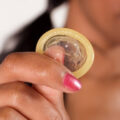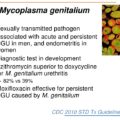Blue waffle STD is not a genuine STD because there is no infectious process that would result in the vagina turning blue,” says Dalia Davood, M.D., an ob-gyn at Advocate Lutheran General Hospital in Park Ridge, Illinois. “In my years of practice and study, I have seen no documented medical literature where anything of this nature has occurred.”
Planned Parenthood even stepped in to clear things up in 2012: “Blue waffle is totally, completely, 100 percent urban legend. It doesn’t exist,” the organization wrote on a blog post. PP even cleared up some of the other symptoms—blue waffle was also thought to cause unusual or smelly discharge, along with itching or burning—saying that, while those symptoms can be connected to a condition called vaginitis (essentially, an irritation of the vagina), the whole of “your privates will turn blue” portion is completely false.
Other Myths About STDs You Should Know
Myth: Once you’ve had an STD, there’s no chance of getting it again.
Fact: You can get some STDs more than just once.
Some STDs are yours for life, like herpes and HIV. Others, like chlamydia and gonorrhea, can be treated, but you may get infected again if you have sexual contact with someone who has them.
What can you do?
Protect yourself with condoms, of course! And if you’re having sex, let your doctor know so you can get tested regularly. If you do get diagnosed with an STD, your partner should be treated at the same time you are. That way your partner will avoid future problems — and avoid re-infecting you.
Myth: Only “trashy” people get STDs.
Fact: STDs don’t discriminate.
Rich people get STDs. Poor people get them. Athletes get them. Math geeks get them. CEOs and professors get them. Even someone having sex for the first time can get an STD. The only people who have no risk of getting an STD are people who haven’t had sex or any kind of sexual contact.
What can you do?
If you decide to have sex, always use a condom every time. Even if you’re already on another kind of birth control, like the Pill, you should still use a condom. That’s because condoms are the only type of birth control that reduces the risk of getting an STD.
Myth: If your partner has an STD, you’ll see it.
Fact: There’s often no sign that a person has an STD.
Even doctors often can’t tell by looking if people have STDs. So they need to do tests, like bloodwork. People with STDs might not know they have them: STDs don’t always cause symptoms. But it is possible to carry and spread the virus without ever having an outbreak. Untreated STDs can add up to serious health problems, like infertility (the inability to have a baby) or pelvic inflammatory disease (PID), which may land you in the hospital.
What can you do?
Even if you and your partner both think you’re STD free, get checked out before having intercourse. Then use a condom every time, just to be sure. It can take a while for some STDs to show up on tests.
Myth: You can avoid STDs by having some type of sex.
Fact: Where there’s sex (oral, anal, vaginal, or even just sexual contact), there can be STDs.
The viruses or bacteria that cause STDs can enter the body through tiny cuts or tears in the mouth and anus, as well as the genitals. Some STDs, like herpes or genital warts, can spread just through skin-to-skin contact with an infected area or sore.
What can you do? Use a condom or a dental dam every time you have oral or anal sex. If the taste of latex isn’t your thing, there are flavored condoms made specifically for oral sex.
Myth: If you get checked and you’re STD free, your partner doesn’t need to get checked as well.
Fact: Your partner could have an STD and not know it.
Who wants to make the effort to get tested, find out they don’t have an STD, and then end up catching one from a partner anyway?
What can you do? Get tested together. It may not be your most romantic date, but nothing says “I care” like trying to protect a boyfriend or girlfriend from illness.
STDs are more than just an embarrassment. They’re a serious health problem. Left untreated, some STDs can cause permanent damage, such as infertility and even death.
There are tons of myths out there about sex and STDs — the ones above are just a few of them. Luckily, you only need to remember these essential truths:
- The only way to 100% avoid STDs (and pregnancy) is not to have sex.
- If you do have sex, use a condom every time.
- If you have had sex, get tested for STDs.





